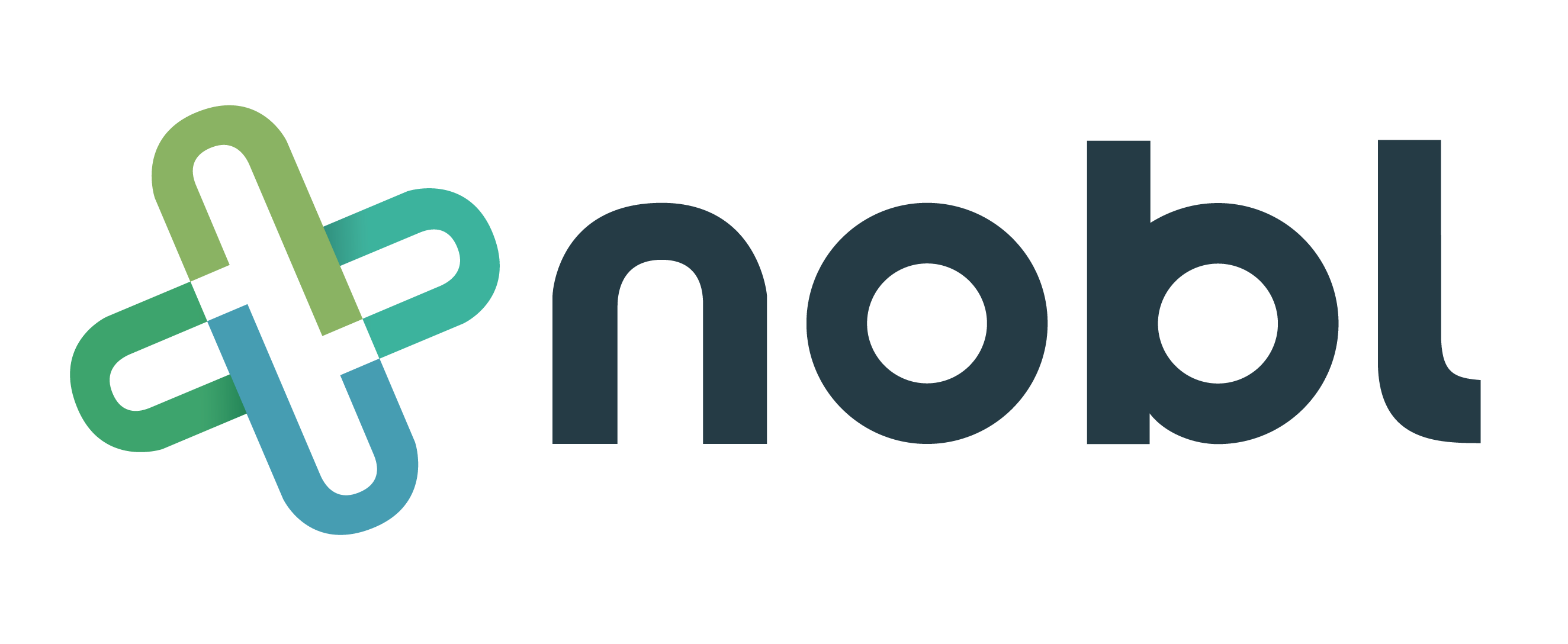
5 min read
Employee Rounding Through the Eyes of the Worker
Nobl Health Jul 14, 2020 4:50:00 AM
Rounding on employees is helpful to solicit input and promote retention when the work environment is running smoothly and all associates have the information, resources and support they need. But when the world is turned upside down, as it is now from the COVID-19 pandemic, connecting with employees is no longer a “nicety” but possibly a life-saving touch point. In either scenario, making assumptions about the information that is valued by direct reports or frontline workers can lead to employee rounds that might make matters worse rather than better. Consider the following elements when designing or updating employee rounding structures and processes.
Stop Designing Questions for Employees
We can all appreciate that senior and mid-level management have specific information that they hope to gain by visiting with employees. Several formats are used to connect with employees – town hall meetings, open-door sessions, online chats, and 1:1 rounding. Each of these methods can be effective if goals and expectations are clearly identified in advance. But too often, leaders promote these sessions to “connect” with employees, then end up “sharing information” more than collecting it. Someone once said, “nothing should be shared in a meeting that can be reported in a written document.” Failure of this concept can be observed within the typical unit/clinic level staff meeting. Most of the information is presented by the leader or meeting facilitator and after all the data is shared, there is often minimal time left for open discussion or reaction to the material presented. The dialogue may just be getting to the point when time has expired, and everyone must move on to the next meeting. Employees leave feeling frustrated and can be left hanging. To correct this meeting scenario, agendas can be developed collaboratively between leaders and followers, so that a balance exists between information sharing and feedback collection. Putting information, data, or budget variances into a handout for distribution prior to or during the meeting helps to move to the items or issues that require dialogue to reach consensus or resolution. At Nobl we apply this concept to our Board of Director meetings. The slide deck with the routine information is forwarded prior to the meeting. During the meeting, a brief review of each section is presented, and if no one has questions we move on to the next topic. This allows for two separate open discussion sessions during each two-hour meeting. Gathering the wisdom from board members has become a cornerstone of Nobl success, and board members feel valued for their ideas.
The same concept applies to employee rounding by leaders at all levels. Rather than Human Relations or executive/leader teams designing rounding question sets, consider collaborative development of the questions and outcomes through randomly selected employee focus groups or established task forces, committees, or councils with a variety of employees from across the organization. Besides the content of questions, this process helps to set shared expectations for closing the loop on conversation issues and ideas. Gathering concerns or ideas, failing to act on them, or failing to keep the originator apprised of the status of the issue can lead an unhappy or stressed employee to become an “actively disengaged” employee, capable of poisoning the work environment before leaving or being asked to leave. Creating lengthy employee rounding question sets and expecting leaders to address each question during every round can result in the employee and the leader feeling rushed or never getting to the concerns that really matter.
Do not skip the preplanning with employees to define the structures and processes of 1:1 rounding.
Empowering Teams to Create the Right Questions
Bringing a group together to describe an ideal employee rounding scenario is a great first step. To maximize effectiveness of these sessions, consider these ground rules.
-
Leave rank at the door
This is an extremely important concept. A brilliant and authentic nurse once started a newly-formed shared leadership quality council with this introduction, “My name is Toni, I have been a nurse for 37 years and I am here to learn and grow. Everyone on this council has an equal voice and I am excited to know you and hear your ideas.” After the fourth meeting, several of the staff nurse members of the group were surprised to discover that Toni was the CNO of the hospital. Not once did she pull rank or respond in a manner that would suggest an executive leader. This was a phenomenally successful group, reaching goals within 12 months.
-
Consider pre-work
Not everyone can process information rapidly. Some team members need to read things over, review content and then consider the pros and cons. Be respectful of these differences and provide 4-7 days for each team member to review the proposed work or notes from the previous session. This tactic encourages independent thinking and mitigates group think bias that can undermine process development.
-
Describe expectations of courtesy and respect
Do not assume that everyone attending has strong communication skills or understands how to respect and absorb the ideas or suggestions of others. In today’s asynchronous society, where ideas flow as quickly as tweets or texts can be typed, sharing opinions and ideas is seldom the issue. Listening, thoughtfully considering thoughts or ideas, and waiting for others to finish speaking can become a problem. Consider asking all members to write down notes about what they hear before responding.
-
Engage introverts and extroverts
Taking the time to go around the table to collect thoughts from all members prior to moving on to the next topic empowers introverts to be heard as loudly as the extroverts in the group. An extrovert, with warp-speed information processing, can be the death of a meeting especially when they also rank highly in the company.
-
Utilize a facilitator when possible
Using an outside facilitator to keep the discussion on topic and moving ahead can effectively condense planning into a surprisingly short time. This individual can also help to regulate behaviors and synthesize concepts as they are presented.
-
Stop and consider the dissenting voice
If a group becomes too homogenous, then single-minded thoughts can quickly reach premature conclusions (anchoring bias), resulting in rounding processes that don’t achieve the desired end result. Randomly assign someone at each meeting to represent the “nay-sayers” or “average employee.” Revisiting how others might perceive the work can avoid misinterpretations and help to create the needed buy-in to make the initiative successful.
-
Sleep on the decision
Giving everyone a chance to revisit the process a day or two later will often illuminate barriers or challenges that might lie ahead. Very few rounding situations require immediate action, and this “pause” can prevent a lot of rework for developers or educators.
-
Distribute drafts to a wider audience
After the pause, and when all core team members are satisfied with the resulting processes and questions, send materials out to at least twice as many other stakeholders. Provide a chance for spontaneous reaction to what has been developed. This second-tier validation is also extremely helpful to spot unforeseen issues outside mainstream workflows.
Using a Stoplight Report with Your Team
Once the structures and processes for employee rounding have been fine-tuned, the actual rounding process can begin. It is unfortunate that many organizations don’t put as much forethought in how they will record these 1:1 employee rounds as they do the questions themselves. Rounding on dozens of direct reports takes time, and without an organized, fast, and easy way to record, resolve, and communicate the dialogues, important communication can be missed.
Nobl recognized this need before the Employee platform was ever launched. From the beginning, the Nobl Stoplight Report was made available to gather, categorize, prioritize, and report the status of issues collected during employee rounds. This flexible report can be downloaded, printed, or shared in a variety of ways. Each leader has a separate stoplight to manage their rounding follow-up. Leaders who round as teams, can also share a stoplight report, so that each rounder knows what is in the pipeline for resolution and to assure that nothing is dropped. Some organizations use the Employee Rounding platform to document annual competencies or other observations of employee performance. Reports of completed skills are filterable, adaptable, and printable. Accompanying Stoplight reports can be used to identify trends being seen so that barriers or best practices can be easily shared or acted upon.
Summary
Valuing employees enough to engage with each one 1:1 at specific times throughout the month, quarter or year demonstrates respect for their needs, views, and contributions. Using the Nobl Employee platform to automate employee touchpoints can support the analysis of trended data and facilitate closing the loop along the way.
Written by Teresa Anderson, EdD,MSN, NE-BC, Nobl CNO
New Free eBook
Best Practices for Sharing and Reviewing Data from the Nobl Rounding Platform
Beryl Institute Case study
Improved First Impressions at Your Front Door - Patient Ambassador Rounders Enhance the Patient Experience of a Busy Emergency Department
Recent Posts

Five Key Factors to Consider in Pediatric Leadership Rounding



